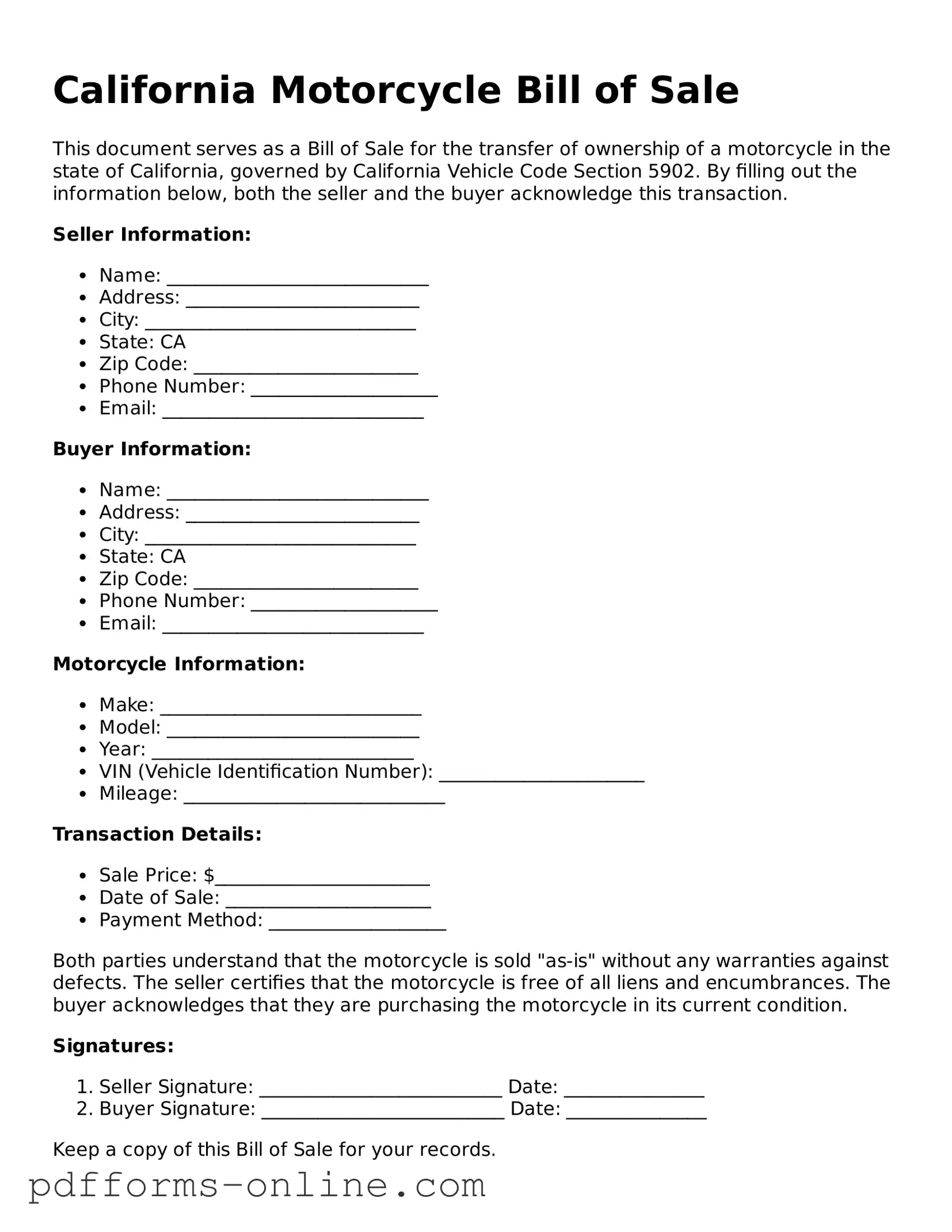The California Vehicle Bill of Sale is a document that serves a similar purpose to the Motorcycle Bill of Sale. Both documents facilitate the transfer of ownership from one party to another. They include essential information such as the buyer's and seller's names, addresses, and signatures. Additionally, both forms require details about the vehicle, including its make, model, year, and Vehicle Identification Number (VIN). This ensures that the transaction is clear and legally binding, providing protection for both parties involved.
The Boat Bill of Sale shares similarities with the Motorcycle Bill of Sale, as both are used to document the sale of a recreational vehicle. Each form captures critical information about the buyer and seller, as well as specifics regarding the boat or motorcycle, such as its registration number and hull identification number. The purpose of both documents is to create a clear record of the transaction, which can be important for future ownership verification and registration purposes.
A Car Title Transfer Document is another form that resembles the Motorcycle Bill of Sale. This document is essential when ownership of a car is transferred, much like how the Motorcycle Bill of Sale operates for motorcycles. Both documents require the seller's signature to confirm the sale and the buyer's signature to acknowledge acceptance. They also include vehicle details to prevent any confusion regarding the specific item being sold. This ensures that the transaction is officially recognized by the state.
The ATV Bill of Sale is also similar to the Motorcycle Bill of Sale, as it serves to document the sale of an all-terrain vehicle. Both documents capture the essential details about the transaction, including buyer and seller information, and vehicle specifics. The ATV Bill of Sale, like its motorcycle counterpart, helps to protect both parties by providing a written record of the sale, which may be required for registration or titling purposes in many states.
Lastly, the Trailer Bill of Sale is akin to the Motorcycle Bill of Sale in that it documents the sale of a non-motorized vehicle. Both documents require similar information, including the buyer's and seller's identities and the specifics of the trailer or motorcycle being sold. These forms serve to create a clear record of ownership transfer, which can be crucial for legal and administrative purposes. By ensuring that all necessary details are included, both documents help facilitate a smooth transaction between parties.
